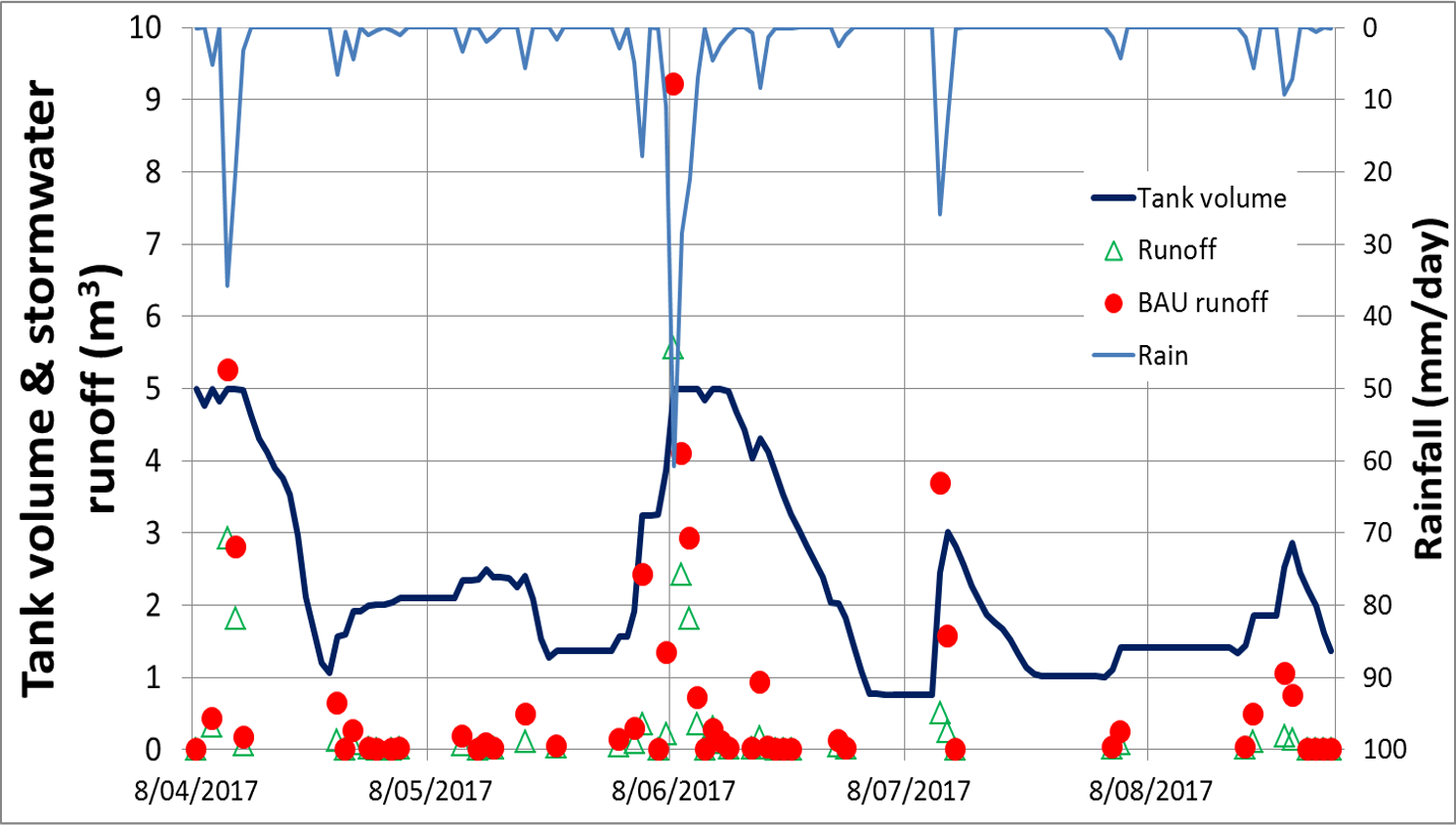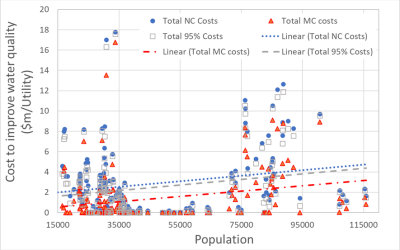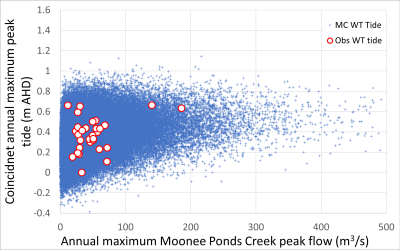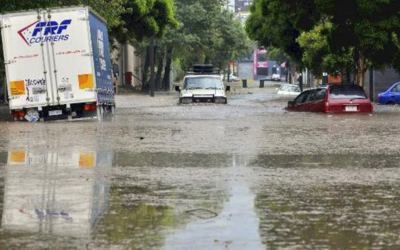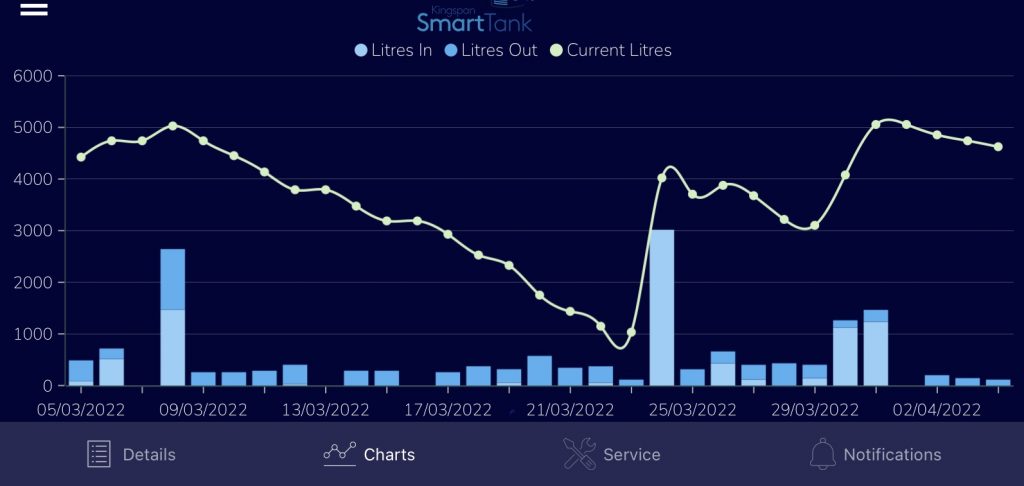
Figure 1: Smart tank monitoring at the Carrington House
Impact of rainwater tanks on stormwater infrastructure.
What is the available storage in rainwater tanks prior to a rain event that is significant to stormwater infrastructure?
The use of design storms is current Australian practice for design of stormwater management
strategies. Thus evaluation of the impact of rainwater tanks on the performance of stormwater
management infrastructure is reliant on understanding of the storage volumes available in tanks prior to storm events of a given Annual Exceedance Probability (AEP).
Results from long term monitoring at the Carrington House provide important information to understand this issue. A smart tank monitor provided by Kingspan (see Figure 1) provides a hint of the processes. The rainwater storage is drawn down by rainwater use prior to a rain event and this ensures there is rainwater storage available to manage stormwater runoff. The long term results from the Carrington House were published by Coombes (2018) (down load the paper for full details) and are shown in Figure 2 which shows rainfall, rainwater volume in the tank (Tank Volume), stormwater runoff with and without the rainwater tank. Note that rainwater from a 5000 litre storage supplies all water uses in the two person household.
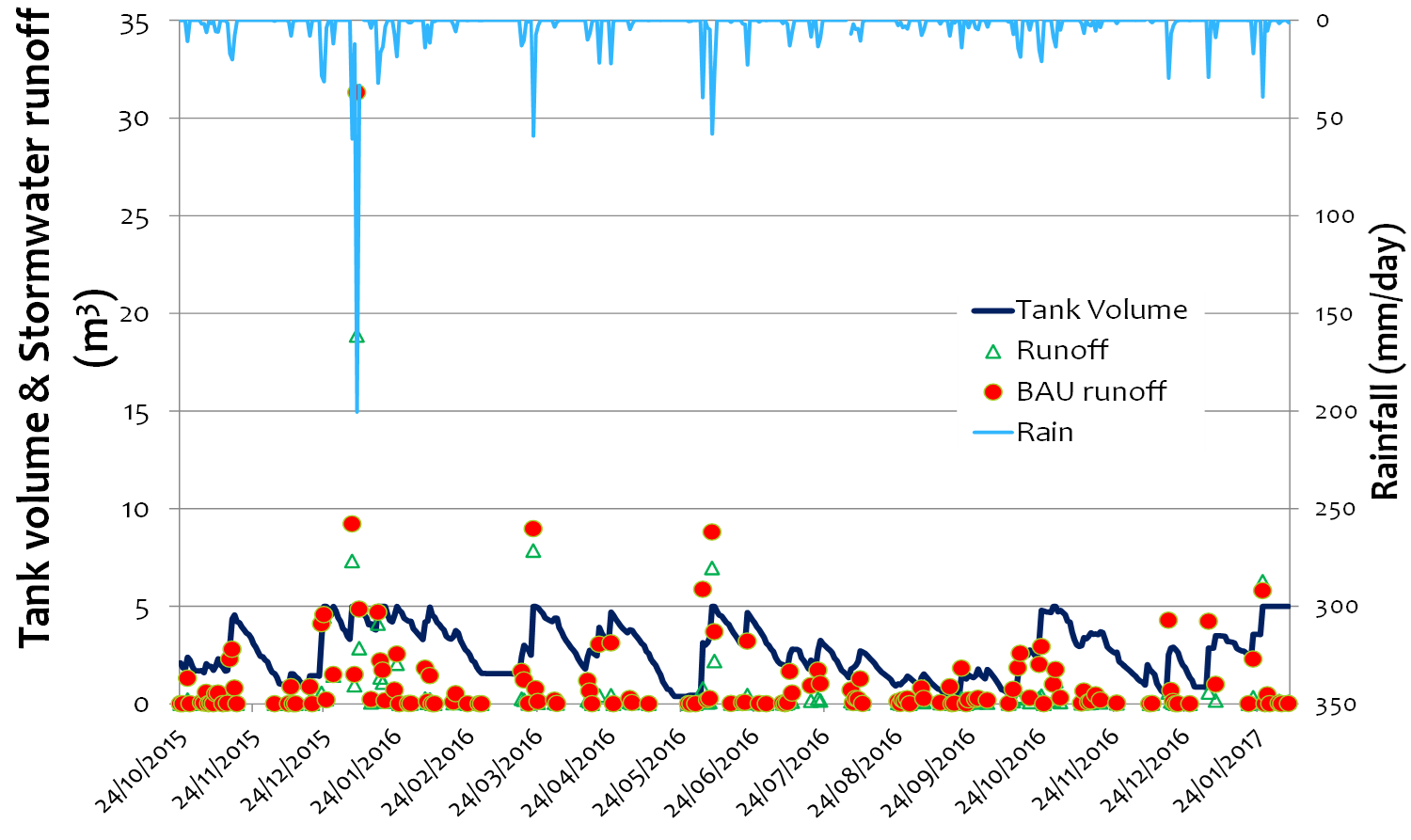
Figure 2: Rainfall, rainwater storage and stormwater runoff at the Carrington House
Figure 2 shows that the rainwater tank has storage available prior to most rain events which reduces stormwater runoff from the property. Figure 3 presents the extent of the available storage in rainwater tanks prior to rain events, and the change in stormwater runoff created by the rainwater tank.
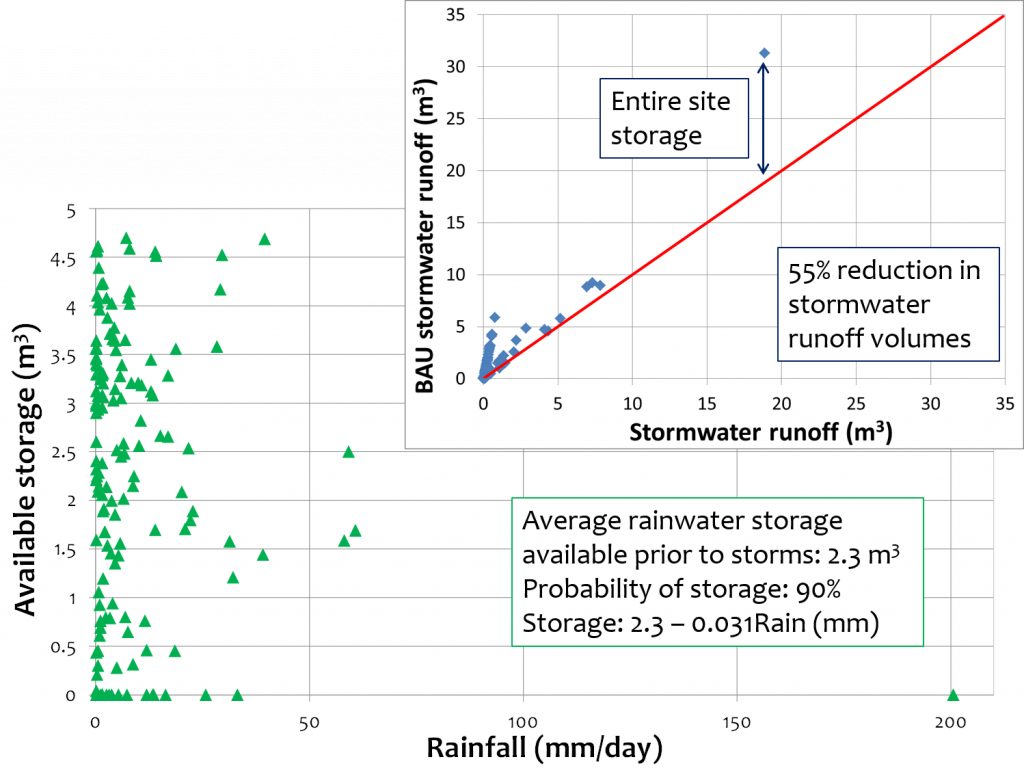
Figure 3: Available storage in rainwater tank and stormwater runoff at the Carrington House
Figure 3 shows that there is a 90% probability that nearly half of the rainwater tank capacity is available prior to rain events and provides a relationship to evaluate this probability.
Impacts across Australia
Coombes and Barry (2008) (download paper for more details) used continuous simulation, historical rainfall sequences and a unique method utilising virtual storages to determine storage volumes available in rainwater tanks prior to rain events of a given ARI. Available storages in rainwater tanks prior to rain events were found to vary with climate at each location.
The seasonality of rainfall patterns at each location which is a strong component of the balance between the timing of water demands and rainfall throughout a year has a strong influence on the magnitude of available storage volumes. This was highlighted by the larger available storages in tanks located in Brisbane that resulted from a summer rainfall pattern that consistent with expected higher water demands during the same period. In contrast, the lower available storage volumes in Adelaide were due to higher water demands occurring in summer which was inconsistent with the winter rainfall pattern at that location.
Whilst the larger available storage volumes in tank located in Sydney resulted from the higher indoor water demands that balanced the more even seasonal distribution of rainfall at that location. Available storage volumes in rainwater tanks prior to rain events at each location was observed to increase with tank capacity, household size and the ARI of rain events, and to decrease with increases in connected roof areas at each location. The variation in these parameters was seen to be conditioned on local climate and water demand patterns. Clearly the optimum use of rainwater tanks as part of a stormwater management strategy will be dependent on careful consideration of the key variables; local climate and water use patterns, the selected end use of rainwater, tank size and roof area.
Whilst this paper has provided important insight into the design of rainwater tanks for stormwater management, the results are limited by the presentation of a single rainwater use strategy and the relationship between these results using real rainfall sequences and design storms has only been implied. It is also suggested that the search interval and space used in the virtual storage method will need to be further explored to increase the robustness of the results. Additional work in this ongoing research programme has targeted a wide range of end uses for rainwater, analysis of the links between design storms and real rainfall at each location, and perfecting the virtual storage method .
Conclusion
Rainwater tanks used for indoor water demands are unlikely to be full prior to the majority of rain events.
References
Coombes P. J., (2018), Two decades of household water and energy monitoring – rainwater harvesting to solar battery storage, 10th International Conference on Water Sensitive Urban Design: Creating water sensitive communities (WSUD 2018 & Hydropolis 2018), Engineers Australia, Perth, Australia.
Coombes, P.J., and Barry M.E., (2008), Determination of Available Storage in Rainwater Tanks Prior to Storm Events, Water Down Under 2008: Incorporating 31st Hydrology and Water Resources Symposium, 4th International Conference on Water Resources and Environment Research, Adelaide, Australia.

